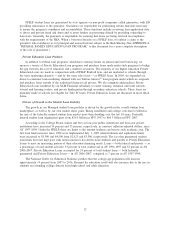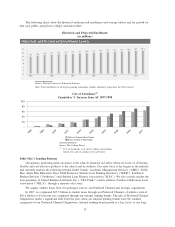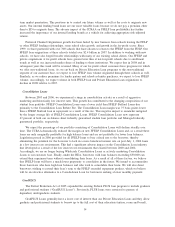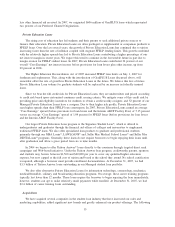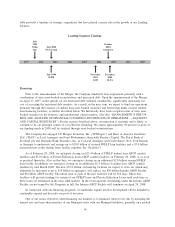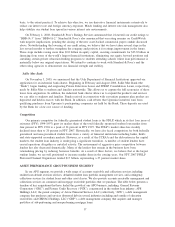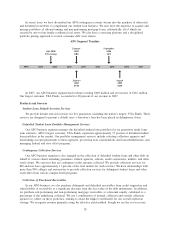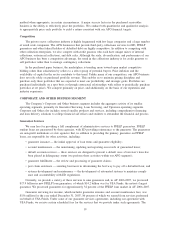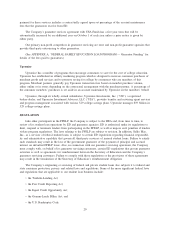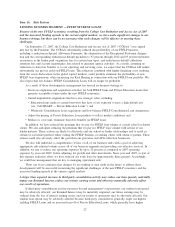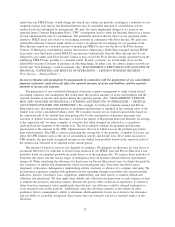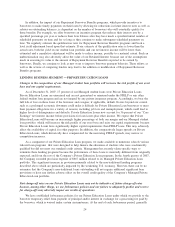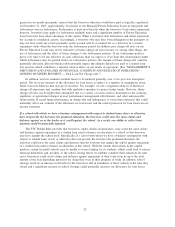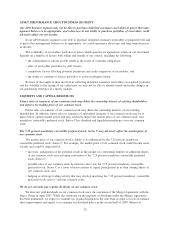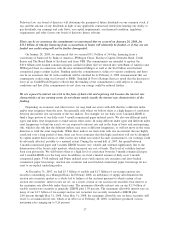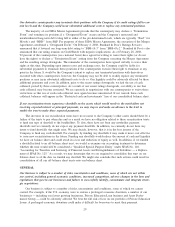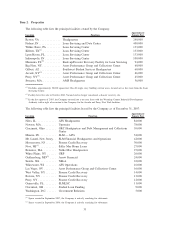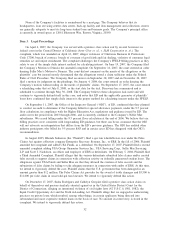Sallie Mae 2007 Annual Report Download - page 23
Download and view the complete annual report
Please find page 23 of the 2007 Sallie Mae annual report below. You can navigate through the pages in the report by either clicking on the pages listed below, or by using the keyword search tool below to find specific information within the annual report.Item 1A. Risk Factors
LENDING BUSINESS SEGMENT — FFELP STUDENT LOANS
Because of the new FFELP economics resulting from the College Cost Reduction and Access Act of 2007
and the increased funding spreads in the current capital markets, we have made significant changes to our
business strategy, but there can be no assurance that such changes will be effective in meeting these
challenges.
On September 27, 2007, the College Cost Reduction and Access Act of 2007 (“CCRAA”) was signed
into law by the President. The CCRAA substantially reduced the profitability of our FFELP business,
including a reduction in Special Allowance Payments, the elimination of the Exceptional Performer designa-
tion and the corresponding reduction in default payments to 97 percent through 2012 and 95 percent thereafter,
an increase in the lender paid origination fees for certain loan types, and reduction in default collections
retention fees and account maintenance fees related to guaranty agency activities. As a result, assuming no
reductions to borrower benefits or to our operating and servicing costs, we expect that the CCRAA will reduce
substantially our pre-tax yield on FFELP loans. This reduction combined with higher financing costs resulting
from the severe dislocations in the global capital markets, could possibly eliminate the profitability of new
FFELP loan originations, while increasing our Risk Sharing in connection with our FFELP loan portfolio. We
also expect that low-balance FFELP Consolidation Loans will no longer be profitable.
As a result of these developments, management has revised its business strategy to:
• Focus on origination and acquisition activities for both FFELP loans and Private Education Loans that
generate acceptable returns under the new FFELP economics;
• Curtail unprofitable originations that have less strategic value, including:
• Education loans made to certain borrowers that have or are expected to have a high default rate
(see “GLOSSARY — Private Education Loans”); and
• Wholesale Consolidation Loan acquisitions and low-balance FFELP Consolidation Loan originations.
• Adjust the pricing of Private Education Loan products to reflect market conditions; and
• Reduce or, over time, eliminate borrower benefits on FFELP loans.
In addition, we have reduced the premium that we pay for FFELP loan volume at certain school-as-lender
clients. We also anticipate reducing the premium that we pay for FFELP loan volume with certain of our
lender partners. These actions are likely to effectively end our school-as-lender relationships and to result in
certain of our lender partners either exiting the FFELP business or seeking others with whom to partner. These
actions could also adversely affect the growth in our guarantee and APG collection businesses.
We also will undertake a comprehensive review of all of our business units with a goal of achieving
appropriate risk-adjusted returns across all of our business segments and providing cost-effective services. In
addition, we aim to reduce our operating expenses by up to 20 percent as compared to 2007 operating
expenses by year-end 2009, before adjusting for growth and other investments. Since year-end 2007, as part of
this expense reduction effort, we have reduced our work force by approximately three percent. Accordingly,
we could lose management that are key to managing operational risk.
There can be no assurance that changes we are making or may make in the future to address these
developments will be successful in meeting the significant challenges of the new FFELP economics and the
increased funding spreads in the current capital markets.
A larger than expected increase in third-party consolidation activity may reduce our loan spreads, materially
impair our Retained Interest, reduce our interest earning assets and otherwise materially adversely affect
our results of operations.
If third-party consolidation activity increases beyond management’s expectations, our student loan spread
may be adversely affected; our Retained Interest may be materially impaired; our future earnings may be
reduced from the loss of interest earning assets; and our results of operations may be adversely affected. Our
student loan spread may be adversely affected because third-party consolidators generally target our highest
yielding FFELP Loans and an increased run-off of Private Education Loans, which generally have higher
22


